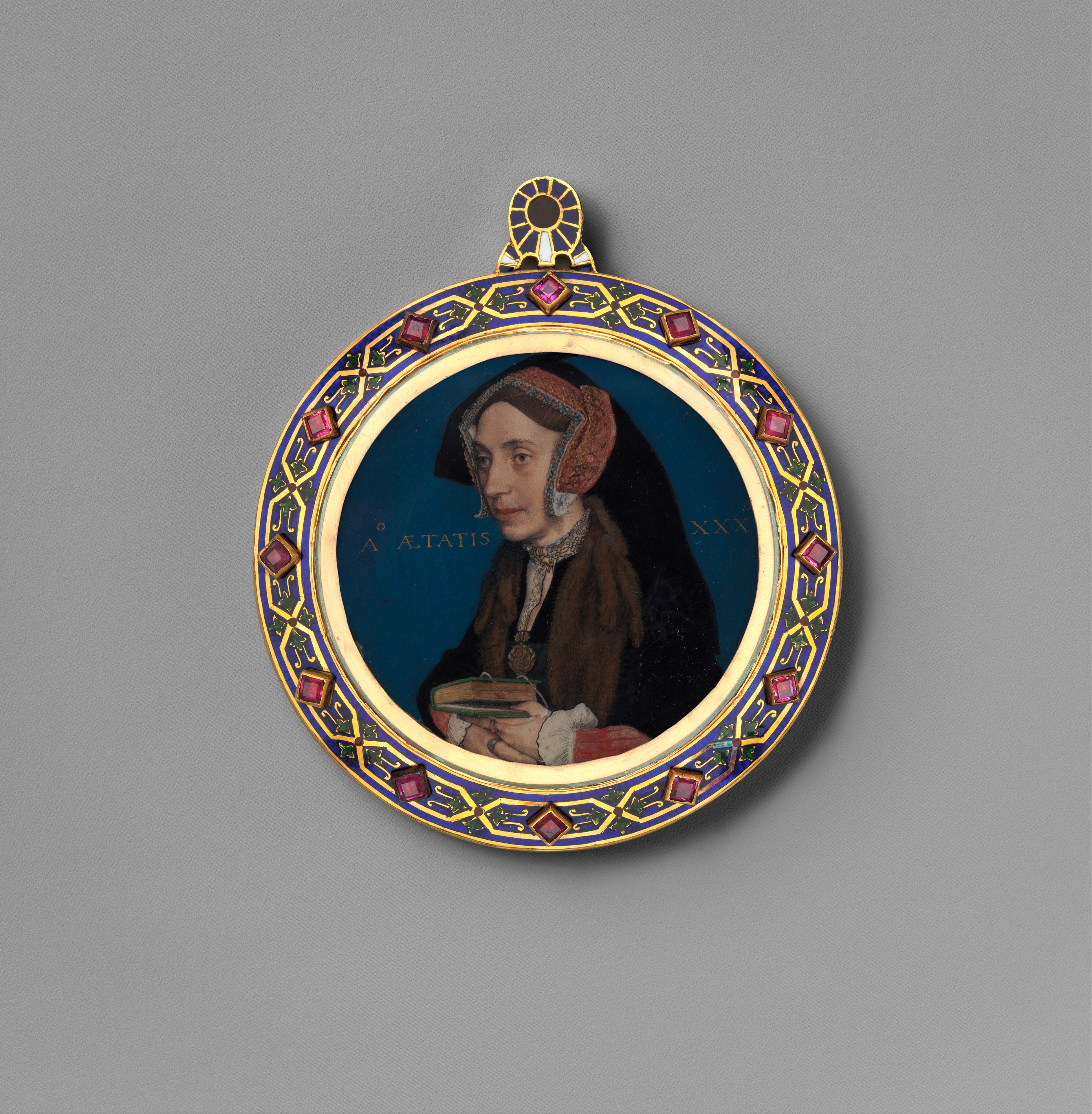The Portrait of a Young Woman was painted by a Netherlandish Painter circa 1535. If you go the provided link, the Met Museum allows you to zoom in close to study the embroidery pattern.
Below is my interpretation of the pattern found on the top of her collar.
Margaret More, Wife of William Roper, was painted by Hans Holbein the Younger, circa 1535-1536. This portrait is available at the Met Museum (pictured below).
Below is my interpretation of the blackwork embroidery pattern found on her collar.
Click here for another portrait (Charles de Cosse, Count of Brissac, circa 1535, painted by Jean Clouet found at the Met Museum) with blackwork embroidery done in gold.
Click here for pages from a book of moresques by Francesco di Pellegrino, circa 1546 (available at the Met Museum), with patterns that could be used for blackwork embroidery.



































